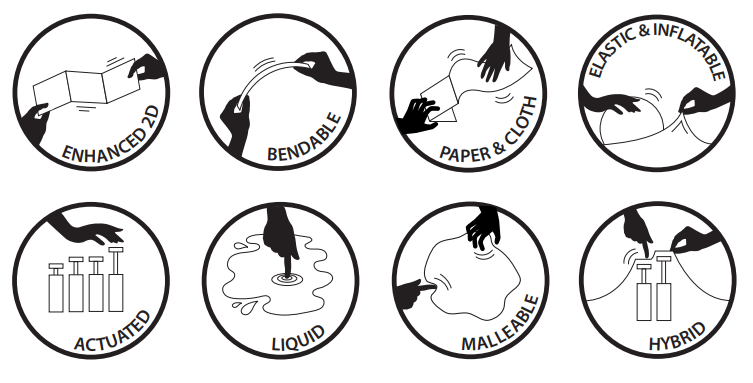Shape-Changing Interface
Shape-changing Interfaces are interactive or computationally controlled devices that are able to transform into any shape or materiality. They use the device’s physical shape as input and output thus providing direct, everyday world interaction experience und inherent support of multi-user interaction. In other words, Shape-changing Interfaces exploit our haptic and kinaestetic senses and instinctive perception of physical forms. The term shape-changing interface is an umbrella term for various interface types. In Analysis and Classification of Shape-Changing Interfaces for Design and Application-based Research Sturdee and Alexander differ between Enhanced 2D, Bendable, Paper & Cloth, Elastic & Inflatable, Actuated, Liquid, Malleable and Hybrid Interfaces.

In Grand Challenges in Shape-Changing Interface Research Alexander et al. also propose an alternative classification for Shape-changing Interfaces with a view to the context of use. The interface might adapt to specific tasks, users or environments, communicate information through shape-change, augment users, simulate objects or simply be decorative. Regarding the deformation one can distinguish between orientation, form, volume, texture, viscosity, spatiality, adding/subtracting, permeability.
